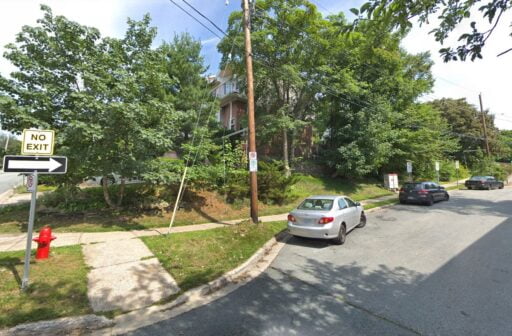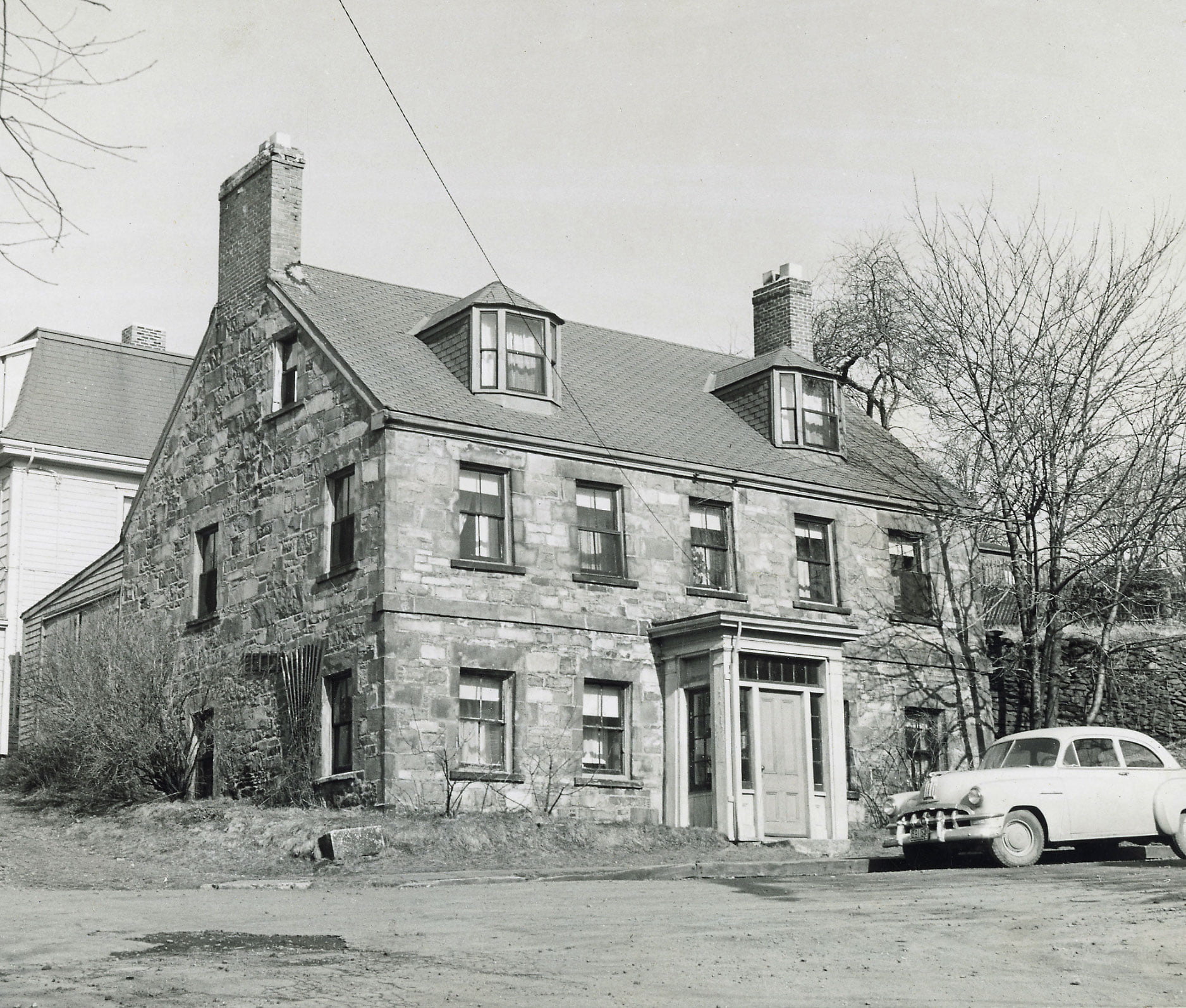
“Old stone house on North Street to rear of Belmont Hotel. Sole remaining house of stone construction for all walls. Exact age unknown – century or more at least built in 1830s. Has been residence of Frank Greene for 40 years. See article by Wetmore in Halifax Mail Star, March 12, 1954, or see “Story of Dartmouth” book. Photo by Wetmore.” https://archives.novascotia.ca/photocollection/archives/?ID=5323&Page=201742643
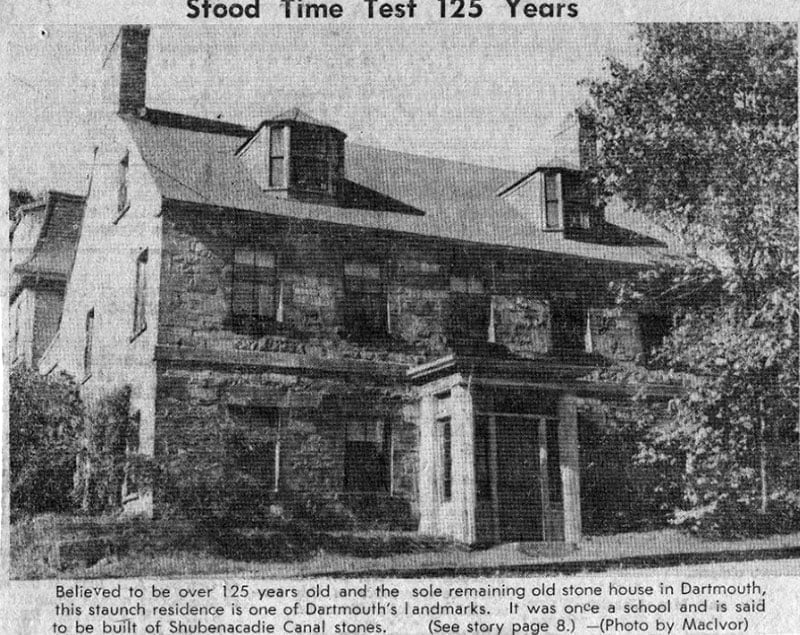
“Sturdy Old House Takes Town Back 125 Years
A relic of the past, the sole remaining old stone house in Dartmouth, has historical walls which – could they but speak, might have many tales of an early Dartmouth to tell. Solidly rising from the corner of North and Edward Streets in Dartmouth, the landmark is believed to be over 125 years old. For many years now, antique lovers or those who relish the solid, simple lines, characteristic of some 18th century architecture, have been captivated by the impressive edifice at first glance.
Many Visit
Mrs. Frank Greene, owner and resident of the house, reports that many times cars have stopped outside the house while the occupants stared at the weathered stones and firm lines of the building.
Several times strangers have come to her door, and asked Mrs. Greene if it would be possible to see inside the house and every time Mrs. Greene has willingly obliged.
Mrs. Greene – and until last year her husband, the late Frank G. Greene – has lived in the old stone house for over 40 years.
There is no cellar under the house and the walls rise straight up from the rock bottom. Stones that built these walls could have come from the old Shubenacadie canal locks, it is thought.
Inside? … Well, there have been some changes made since a century ago but the principle is the same.
Th rooms for the most part are large, the walls thick, and there are three floors including the ground one. On the first and second floors there are spacious rooms that must have been living rooms or parlous at one time, although both are in use they are not utilized as such today.
Beside a couple of bedrooms on the second floor there are two more large ones up a narrow flight of stairs, and under the eaves. In any case, the total is eight rooms altogether.
There is no basement under the house and consequently no central heating unit. Each room has its own individual coal stove which until recently was the sole means of heating the large building. When the Greene’s moved to the house several fire-places and gates were to be found in the larger rooms. these have since been boarded for, as they were not often used, they proved to be what Mrs. Greene termed as “dirt catchers”.
Other renovations included that of the inside color scheme which has changed often in the course of time. Also the windows were originally composed of many small panes of glass which were replaced with larger sheets of glass after the 1918 (sic) Halifax Explosion.
Historian Comments
One of the early owners of the property – at what is now 17 North Street, was John Hawthorne, who died about 1820. The next record of any owner is that of a Thomas Miller, a blacksmith connected with the old Shubenacadie Canal. Local historian J. P. Martin said he thought it possible that Miller might have built the house around 1830 which, he said, would explain the presence of sturdy stones that might have come from the canal.
John Tempest, a leading one time figure in the Halifax business world, was the next known occupant.
Becomes School
Then the stone residence became a private school which was run by Mrs. William Forbes, mother of Rev. E. W. Forbes, Hawthorne Street, Dartmouth. Mrs. Forbes was the former Mrs. Agnes Russell, the late sister of Judge Benjamin Russell. It was after she was a widow that Mrs. Forbes opened school in the house.
A teacher, presumably, stands in the doorway, while another boy is sitting in a pony-cart complete with pony. The road by the house is vague and not yet defined by curb and gutter.
A gifted and talented marine architect and shipbuilder who lived around the latter part of the 19th century, occupied the old stone house until turn of the century when he died. He was Ebenezer Moseley of Halifax, Dartmouth and Le-Have.”
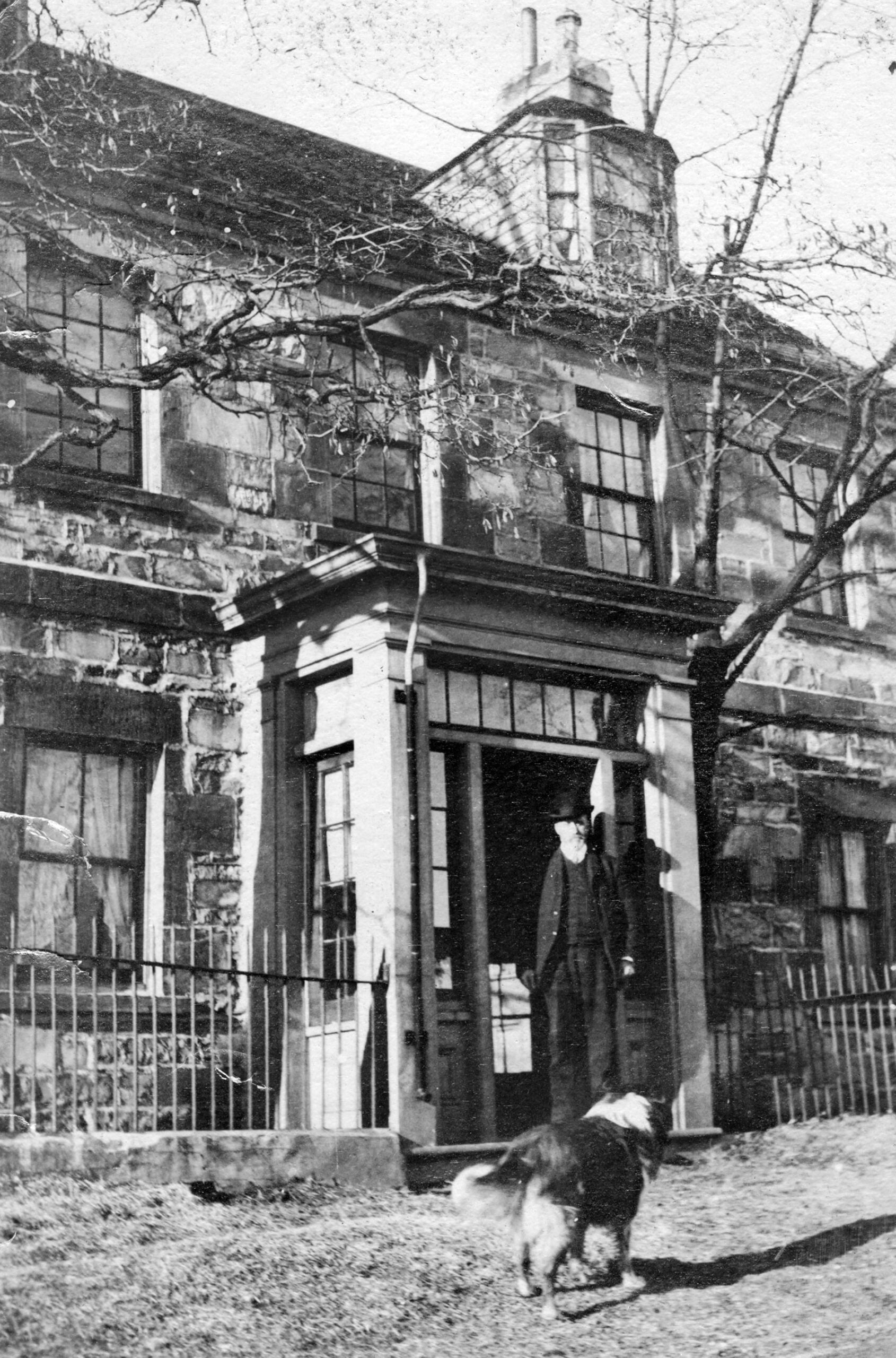
“Old Stone house”, 1954. https://archives.novascotia.ca/photocollection/archives/?ID=5321
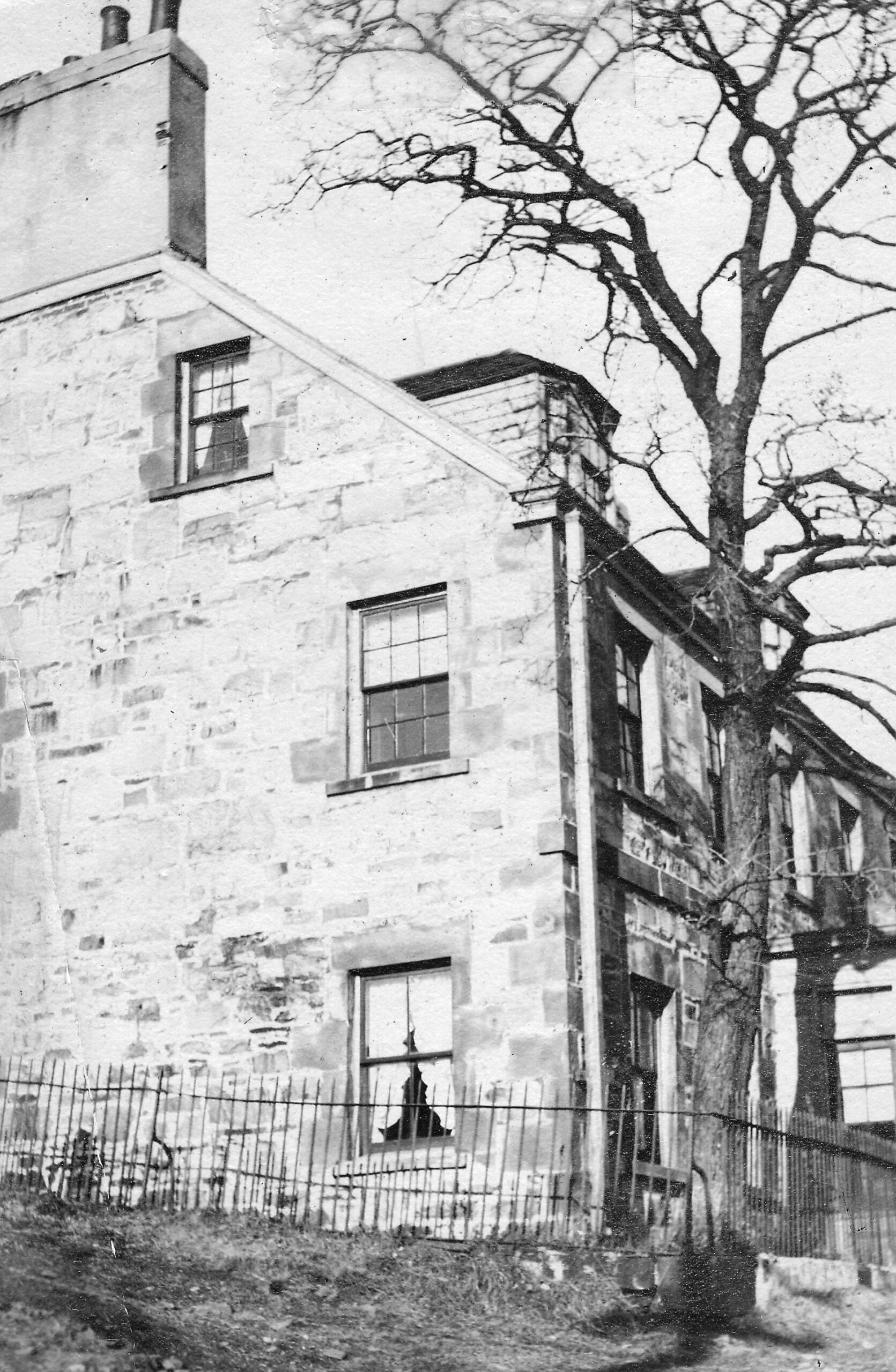
“Old Stone House”, 1954. https://archives.novascotia.ca/photocollection/archives/?ID=5322
